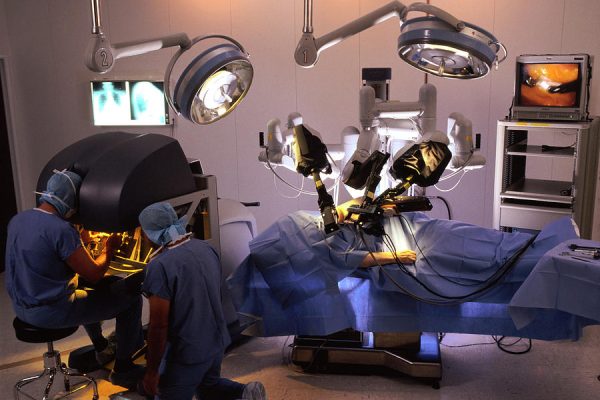
With thousands of new cases identified annually, prostate cancer ranks among the most frequent cancers among men. One state-of-the-art method for treating prostate cancer that has recently evolved thanks to medical technology is robotic surgery.
Compared to conventional surgery, this less invasive method has many advantages, such as improved accuracy, faster healing, and fewer problems. Here we’ll take a look at the benefits of robotic surgery for prostate cancer treatment, how it works, and what patients can anticipate before, during, and after the operation.
Learning About Robotic Prostate Cancer Surgery
A robotic-assisted radical prostatectomy is a type of robotic surgery that removes the prostate gland with the help of a high-tech robotic device. This procedure is often used to treat prostate cancer. The surgeon is able to exert more control and precision while using this device, which is most famously the da Vinci Surgical device. The surgical instruments are placed into the patient’s belly through small incisions, and the robotic system translates the surgeon’s hand movements into smaller, more accurate moves.
By carefully removing the malignant prostate gland, robotic prostate surgery aims to reduce collateral harm to vital organs, nerves, and blood vessels. This is of utmost importance in addressing the two main concerns of men after prostate cancer surgery: maintaining urine continence and sexual function.
Robotic Surgery’s Benefits Compared to Conventional Approaches
- A Method with Minimal Repercussions
The fact that robotic surgery causes minimum disruption to the patient is one of its main selling points. Because it involves making a big cut in the patient’s lower abdomen, traditional open prostatectomy is associated with more discomfort, lengthier hospital stays, and slower recovery periods. Robotic surgery, on the other hand, usually only requires a series of tiny incisions, each no larger than an inch. Because of this, the patient experiences less postoperative pain and can get back to their regular routines more quickly after surgery.
- Improved Accuracy and Visualization
With the robotic device, the surgeon can see the operating site in stunning 3D, with magnification capabilities up to ten times. Minimizing the risk of problems like incontinence and erectile dysfunction requires careful dissection of the prostate and surrounding tissues, which is made possible by this increased vision. Because the robotic instruments can move more freely than a surgeon’s hand, they can execute intricate procedures with more precision.
- Decreased Potential for Issues
There is less chance of complications with robotic prostate surgery when compared to open surgery. The robotic system’s accuracy lessens the chances of infection, excessive bleeding, and harm to nearby structures. Complications including hernias and wound infections are less common with this technique since it is less intrusive.
- Reduced Time Spent in the Hospital and Quicker Recovery
When compared to patients who have conventional open prostate surgery, those who choose for robotic surgery usually have shorter hospital stays and quicker recovery times. Within a week or two following the treatment, the majority of patients are able to resume their regular routines and go home. This is in contrast to open surgery, which usually necessitates a few days in the hospital and a few months of recuperation time.
Conclusion
As a cutting-edge, minimally invasive alternative to conventional surgical procedures, robotic surgery has great promise in the treatment of prostate cancer. Robotic prostate surgery has quickly surpassed traditional methods as the method of choice for both patients and surgeons because to its increased accuracy, less recovery time, and decreased risk of complications.
Patients coping with prostate cancer can take charge of their treatment and get the greatest results if they learn about the process and collaborate closely with a trained surgical team.